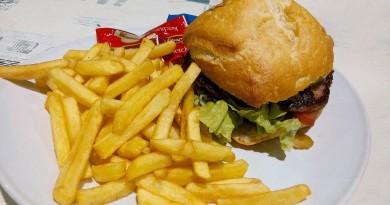What’s Eating Your Baby’s Teeth?
Do babies need to brush? Is it safe to feed babies before bed? How do you brush your babies teeth? In this article we will answer all those questions and many more to help you keep your babies smile as beautiful as they are!
Many infants are put to bed with a bottle of milk in their mouth. Breast milk and formula nourish and comfort the infant, but what parents don’t know is that it can also lead to dental caries, or cavities. What can nourish your baby can also nourish the bacteria that lives in your baby’s mouth.
Early childhood caries also known as Baby Bottle caries is a very common bacterial infection. From the moment the infant’s first teeth erupt (six months or so), they are susceptible to caries (cavities). Consumption of liquids containing fermentable carbohydrates (e.g., juice, milk, formula, soda) increases the risk of dental caries. This is due to increased contact between sugars in the liquid and caries causing bacteria on the teeth. These bacteria create acid from sugars present in the milk, formula and juices. This acid is strong enough to etch the enamel. The result can be quite dramatic and lead to severely rotten teeth and the condition known as Baby Bottle caries.
In normal conditions, the saliva present in our mouth help swish food and debris out of the oral cavity. Enzymes in the saliva digest the sugars in milk and juice into safe forms that your baby can use. So, the clear saliva you see from time to time drooling from your baby’s mouth actually helps to prevent lengthy exposure to tooth damaging acids.
The problem arises when we give infant a sugary drink at nap or nighttime. Saliva production plummets. Swallowing decreases. And any liquids still in the mouth will pool next to the teeth, and slowly dissolve the enamel. If left untreated, caries can result, which can cause pain and infection. Severely infected teeth may need to be extracted. If teeth are infected or lost too early due to baby bottle tooth caries, your child may develop poor eating habits, speech problems, crooked teeth and damaged adult teeth. Healthy baby teeth will normally result in healthy permanent teeth.
Unlike adult cavities, which are usually hidden from view, cavities in the baby’s mouth affects the most visible portion of the front teeth. Once the outer layer of tooth enamel has been breached, the unsightly process accelerates quickly. The upper front teeth are most commonly involved in this infectious process. Tooth caries can be observed by careful inspection. The teeth appear to be stained by a brown to black discoloration. In the late stages, the remaining black stubs of the teeth are clearly visible from a far. Treatment can vary, depending on the extent of the caries.
Prevention is key! For many babies, feeding is the only way they become drowsy enough to slip off into sleep. Gently brushing the teeth becomes extremely important for these children. If the cleaning is done during deep sleep, when the baby is limp and not moving, the child is unlikely to awaken, and the teeth are rescued from hours of decay. Use a tiny dab of baby tooth cleanser on a soft infant toothbrush or on some soft gauze. This should be done whenever a child falls asleep within 15 minutes of feeding. Theonly safe liquid to put in a bottle to prevent baby bottle tooth decay is water. The American Academy of Pediatrics wisely recommends that parents only give bottles during feedings and not allow their children to carry a bottle between meals. In addition, decreasing consumption of sugar, especially between meals, will help prevent infant caries too.
Keeping your baby’s teeth are clean and healthy is an expression of your love. Children with healthy teeth can chew food easily, learn to speak clearly, and smile with confidence at you and at the world. Following the previous steps can help give your child a beautiful smile!
By Dr. Ranveer S Sidhu

